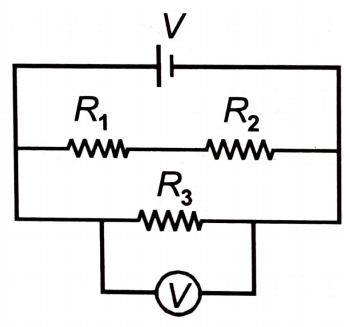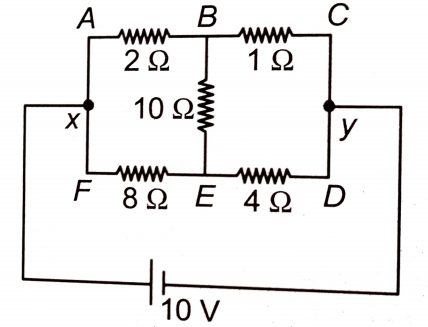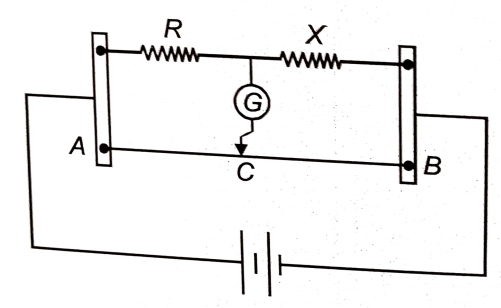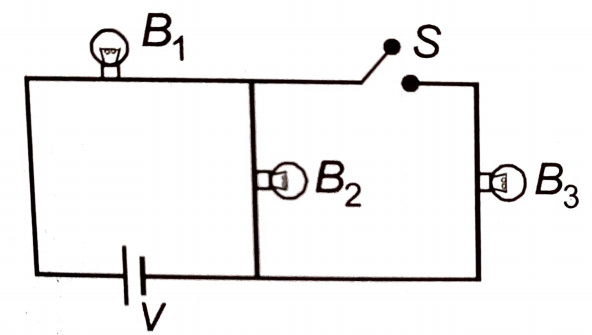Calculate the current shown by ammeter A in the circuit diagram.

1. 0.1 A
2. 0.2 A
3. 0.3 A
4. 0.4 A

Ends A and B are connected to positive and negative terminals of a cell of emf 12 V respectively. The value of voltage shown by the voltmeter of negligible resistance is:

1. Zero
2. 3 V
3. 6 V
4. 12 V
In the circuit shown, R1 is increased. What happens to the reading of the voltmeter (ideal)?

1. Increases
2. Decreases
3. First increases then decrease
4. Does not change
A combination of five resistors is connected to a cell of emf 10 V as shown in the figure. The potential difference will be

1. +5 V
2. +3 V
3. +1 V
4. Zero
In the meter bridge shown, the resistance X has a negative temperature coefficient of resistance. Neglecting the variation in other resistors, when current is passed for some time in the circuit, the balance point should shift towards:

1. A
2. B
3. First A then B
4. It will remain at C
Two cells of e.m.f. E1 and E2 are joined in series and the balancing length of the potentiometer wire is 625 cm. If the terminals of E1 are reversed, the balancing length obtained is 125 cm. Given E2>E1, the ratio E1:E2 will be:
1. 2 : 3
2. 5 : 1
3. 3 : 2
4. 1 : 5
A 10 m long potentiometer wire is connected to a battery having a steady voltage. A Leclanche cell is balanced at 4 m length of the wire. If the length is kept the same, but its cross-section is doubled, the null point will be obtained at:
1. 8 m
2. 4 m
3. 2 m
4. None of these
Of the two bulbs in a household circuit, one glows brighter than the other. Which of the two bulbs has a large resistance?
1. The bright bulb
2. The dim bulb
3. Both have the same resistance
4. The brightness does not depend upon the resistance
Two electric bulbs whose resistances are in the ratio of 1 : 2, are connected in parallel to a constant voltage source. The power dissipated in them has the ratio of:
1. 2 : 1
2. 1 : 1
3. 1 : 4
4. 1 : 2
Three identical bulbs B1, B2 and B3 are connected to the mains as shown in the figure. If B3 is disconnected from the circuit by opening switch S, then incandescence of bulb B1 will:

1. Increase
2. Decrease
3. Become zero
4. No change






